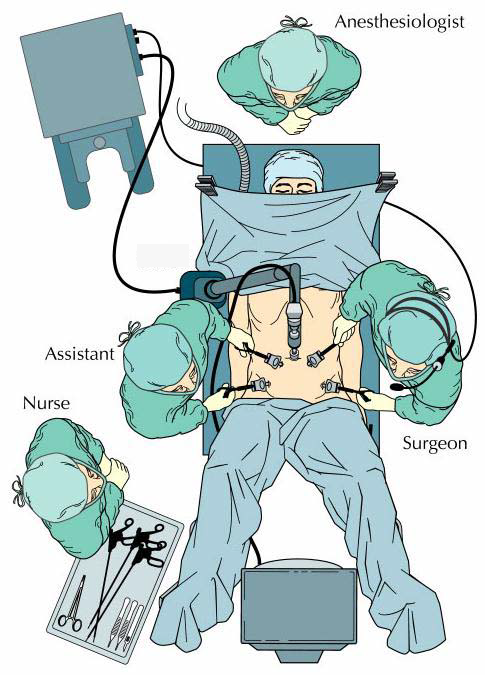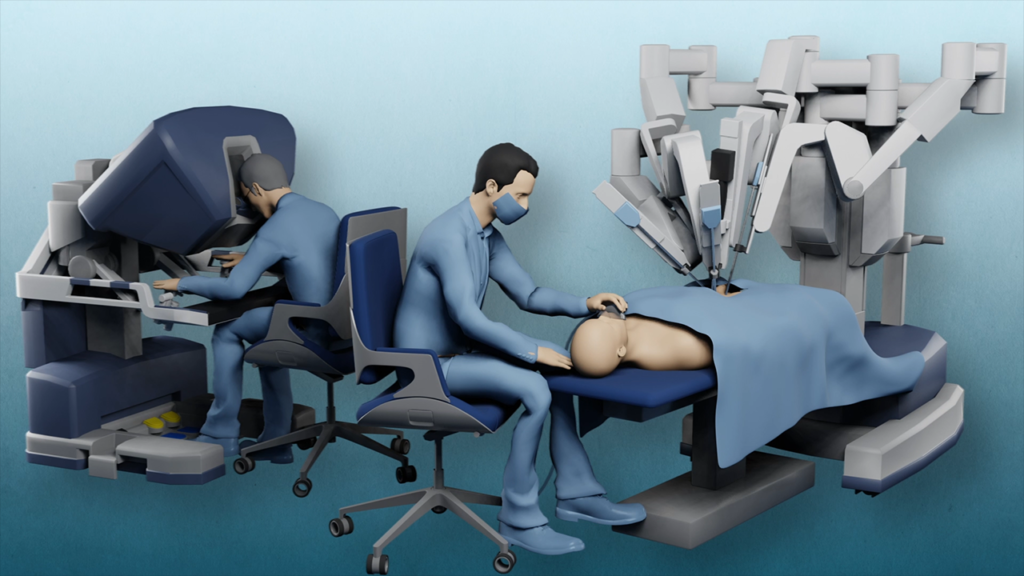Table of Contents
- 1 What types of robotic surgery are there?
- 2 Watch our videos on robot-assisted surgery
- 3 How does robotic surgery compare to open surgery?
- 4 How does robotic surgery compare to laparoscopic surgery?
- 5 How safe is robotic surgery?
- 6 What are the disadvantages of robotic surgery?
- 7 Is robotic surgery right for me?
- 8 Is robotic surgery offered in every hospital?
Surgery remains a safe and reliable option for the treatment of urological diseases.
In surgery, two different methods are used:
- Invasive surgery, also known as traditional or open surgery, is when the surgeon uses a scalpel to make a single large cut (or incision). The surgeon can clearly see the area for the operation and the operation is done through the large cut.
- Minimally-invasive surgery requires only small cuts. The instruments used for the operation are passed through these cuts. There is minor damage to healthy tissue.
Two types of minimally-invasive surgery are:
- Classic Laparoscopic surgery, also known as keyhole surgery. Slender surgical instruments including a camera are inserted through the small cuts and are directly ontrolled by hand by the surgeon (Fig. 1).
- Robotic or robot-assisted surgery. In robotic surgery, surgical instruments, including a video camera, are placed into the small cuts, which are attached to the arms of a robotic interface controlled by the surgeon from a robotic console (Fig. 2). At the console, the surgeon can see a highly magnified and clear 3D view of the area to be operated upon.

What types of robotic surgery are there?
In urology, robot-assisted surgery is used to treat a variety of conditions such as bladder-, kidney- and prostate cancers or other non-cancer conditions of these organs.
The most used robotic procedures in urology are:
- Prostatectomy (removal of the prostate)
- Partial and radical Nephrectomy (removal of part or all of the kidney)
- Pyelo/Ureteroplasty (removal and reconstruction of part of the urinary tract)
- Cystectomy (removal of parts or all of the bladder)
- Retroperitoneal Lymph Node Dissection or RPLND (removal of the lymph nodes at the back of the abdomen)
Watch our videos on robot-assisted surgery
How does robotic surgery compare to open surgery?
- Because much smaller cuts are made compared to open surgery, there is less blood loss, less pain after the surgery and the small cuts heal much faster than large cuts.
- The arms of the robot have a greater range of motion. They allow the surgeon to perform complex procedures with precision, and get to areas they would not be able to easily reach with open or laparoscopic surgery.
- Robotic surgery offers a better magnified and higher-resolution view of the area that is operated on, than open surgery.
- Patients are released from hospital sooner than they would be with open surgery and are able to return faster to their normal activities.
- Robot-assisted surgery usually takes longer than open surgery. In experienced hands these operating times are shorter.
How does robotic surgery compare to laparoscopic surgery?
- As in robotic surgery, laparoscopic surgery uses small cuts and a camera.
- In robotic surgery, the surgeon sits behind a console using hand controls to manipulate the robot. In laparoscopic surgery, the surgical tools are handled directly by the surgeon.
- The arms of the robot have a greater range of motion, whereas in laparoscopic surgery the range of motion of the surgical tools is usually limited to up, down and side to side.
- In robotic surgery, the images are three-dimensional. The surgeon has a magnified high -resolution view of the area being operated on. Although some laparoscopic surgery might offer 3D vision as well, the classical approach features two-dimensional images.
- Robotic surgery provides greater precision compared to laparoscopic surgery.
- In robotic surgery, the surgeon sits behind a console which is less tiring. This can mean a safer operation.
- Robotic surgery provides more possibilities for learning, mentoring, and training. Good quality surgery can be taught and learned.
How safe is robotic surgery?
Robotic surgery is considered safe because it allows surgeons to perform difficult operations more easily than with traditional open surgery.
Robotic surgery has less bleeding and fewer problems. However, all operations involve some degree of risk. Surgeons performing robot-assisted surgery need to be experienced and well trained.
What are the disadvantages of robotic surgery?
- Robotic surgery is expensive and should only be done by a surgeon with a lot of training.
- In case of an emergency, or a problem, the surgeon may have to switch to a laparoscopic approach and eventually may need to remove the instruments in order to change to open surgery and make a larger cut.
- Robotic surgery might take longer than open or laparoscopic surgery.
Is robotic surgery right for me?
Robotic surgery is not right for everyone and not all operations are done using a robot. Talk to your doctor, or health care provider, about the benefits and risks of robotic surgery as it compares with other options.
Is robotic surgery offered in every hospital?
Robotic surgery is not offered in every hospital. Depending on the country, it is sometimes offered only in highly specialised or private hospitals. Ask your doctor, or health care provider, for more information.
When choosing robotic surgery, talk with someone, or a team, who has had a lot of experience and listen to how they approach the surgery.


